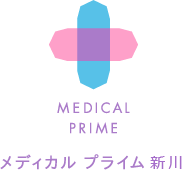Children’s infectious disease “herpangina” is increasing
2023.07.01
Infectious diseases that children are more likely to get from the rainy season to summer are called “summer colds”, and infections with “herpangina”, a representative of summer colds, are increasing.
Surge in herpangina compared to last 5 years
The graph below was announced by the National Institute of Infectious Diseases. The bar graph shows this year’s trend, and where it exceeds the red graph line, it shows that it is considerably higher than in the past 5 years.
Herpangina increases every summer, but you can see that this year there are more cases than usual.
National Institute of Infectious Diseases “IDWR Infectious Disease Weekly Report” Week 23, 2023
https://www.niid.go.jp/niid/images/idwr/pdf/latest.pdf
What kind of disease is herpangina?
Herpangina is a viral infectious disease that is prevalent in summer, mainly in infants. More than 90% of patients are under the age of 5, with the most frequent onset occurring at age 1. The incidence decreases with age.
The most characteristic symptom of herpangina is a blistering rash (blisters) in the mouth. This is not seen in the common cold.
In addition, it is accompanied by fever, sore throat, and redness of the mucous membranes of the mouth and throat.
What if I detect Herpangina?
There is no magic bullet for herpangina. Treatment is specific to relieving symptoms. However, in most cases, the high fever will go away on its own in a few days, and the blisters will heal on their own shortly.
During that time, it may be difficult to eat due to the blisters in the mouth, so avoid stimulating foods and choose foods that are easy to swallow, such as pudding, jelly, cold soup, and porridge.
It is also important to be careful not to become dehydrated. If you have blisters in your mouth, your appetite will inevitably decrease and your water intake will tend to decrease.
Even if your child doesn’t have an appetite, try to keep them hydrated frequently with an ion drink for children or an oral rehydration solution.
Should I take them to the hospital?
There is no fundamental treatment for herpangina, so if the symptoms are not severe, your child can rest at home. In most cases, if they take fluids frequently, rest, and take antipyretics, they will recover in a few days.
However, if you have a persistent high fever, headache, vomiting, convulsions, etc., or if you cannot drink water, please see a pediatrician (for children).
How can I prevent herpangina?
In order to know how to prevent it, let’s first understand the route of herpangina infection. The main routes are contact infection and droplet infection.
In contact infection, the contents of the blisters or the virus excreted in the stool get on the hands, etc., enter the mucous membranes of the mouth, eyes, etc., and cause infection. On the other hand, droplet infection is transmitted by viruses contained in coughs and sneezes.
There is no effective vaccine for herpangina; therefore, prevention of contact infection and droplet infection is preventive. In other words, it is the same as.for any infectious disease, so wash your hands and gargle. Wash your hands thoroughly after returning from outside, before eating, after using the restroom, and after touching diapers.

